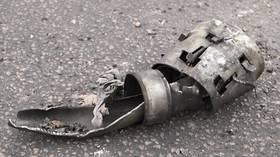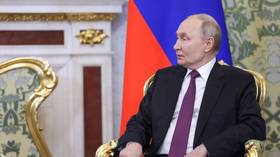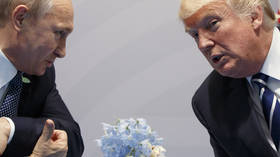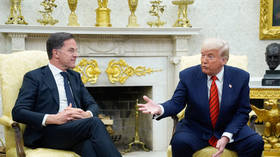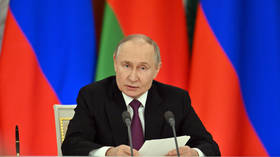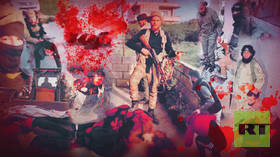Scores of ISIS bodies, burning gas fields – RT visits battleground outside Palmyra (EXCLUSIVE)
RT’s crew has travelled to the mountains overlooking Palmyra - where the battle for the iconic Syrian city was decided - and witnessed scores of Islamic State fighter's bodies and burning oil and gas fields set alight by the retreating terrorists.
“The battle for Palmyra really didn’t take place in the city itself, the bulk of the fighting was in the mountains overlooking the city,” RT’s Lizzie Phelan said from the Hayyan gas fields outside the ancient city.
The mountains have become a “graveyard" for Islamic State (IS, formerly ISIS/ISIL) fighters, she noted.
“We’ve seen this whole area littered with scores of bodies of IS fighters. Many of them dismembered by artillery fire,” but even more killed by gunshot wounds, Phelan added.
According to the correspondent, the fighting in the mountains was “extremely close, in some cases almost hand to hand.”
According to Phelan, the jihadists are “still not far away” as they’re holed up on mountain tops north-east of Palmyra.
“Pro-government forces aren’t advancing any further for now. They’re on standby waiting for further orders.”
RT’s crew also saw the Hayyan gas and oil fields being set alight by retreating IS fighters, with the correspondent describing the fire as “huge.”
“Despite the fact that ISIS have been defeated here, they’re still inflicting huge economic damage… on the Syrian people… because putting out this fire will cause an immense amount of resources,” she said.
Former #ISIS positions dug into the sand in the mountains. #Palmyra#Syriapic.twitter.com/UhD55MF5jc
— Lizzie Phelan (@LizziePhelan) March 4, 2017
In January, IS blew up the Hayyan gas plant in the area, which produced a third of Syria's electricity, causing a major blackout in the capital Damascus and elsewhere.
The Russian military, which backed the Syrian operation to retake Palmyra, announced on Friday that the city was recaptured from terrorists.
Palmyra is a UNESCO World Heritage site, has seen different factions seizing control on several occasions during the conflict.
The jihadists, who controlled it throughout 2015 and for the last couple of months, have destroyed many historic monuments in Palmyra, including the 1,800-year-old Monumental Arch of Palmyra, most of the Temple of Bel, and the Temple of Baalshamin and the Tetrapylon Roman theater.
The Governor of Homs Province, Talal al-Barazi, in an interview with RT, praised the liberation of Palmyra as a “great historic achievement”. The operation, conducted by Syrian forces with Russian military support and planning, provided the “opportunity to preserve the historical monuments of the city," he said.
“It was well planned so as to minimise damage to the city,” Barazi told RT. “Yesterday and today, we have evaluated the state of the infrastructure. There is substantial damage to communications, water, electricity and canalisation… When the Syrian sapper battalion completes the clearance operation and the destruction of the explosive devices installed by ISIS in the city, the immediate work on the restoration of public services will begin.”



